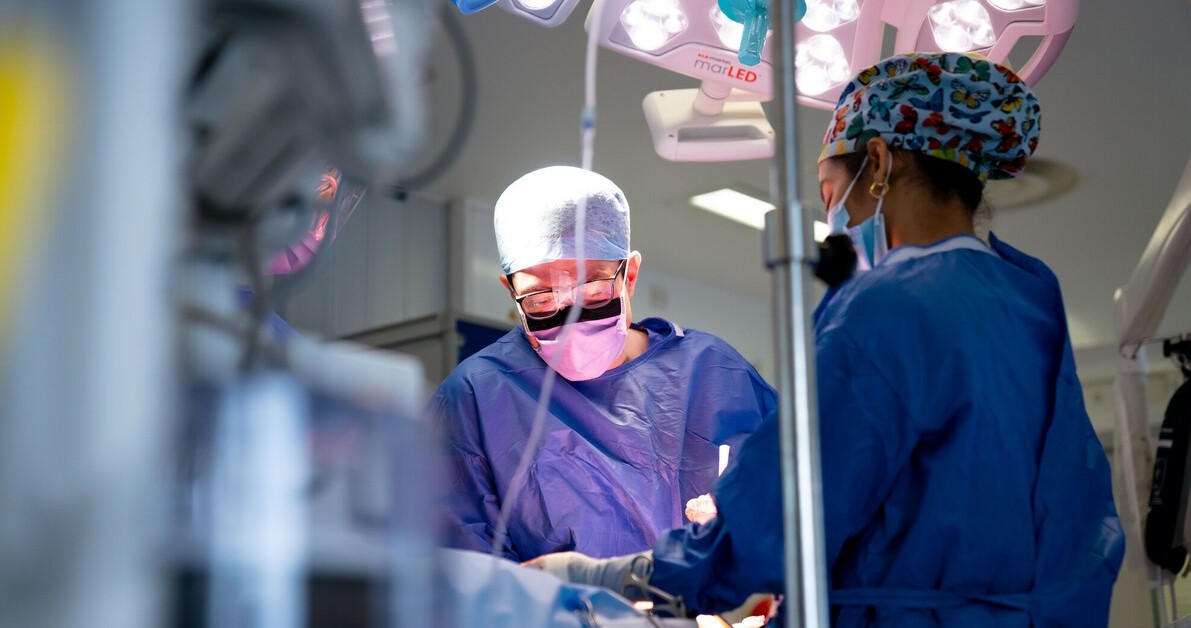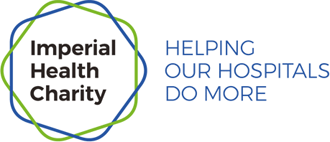
We’re proud to be the dedicated charity for St Mary’s Hospital
As the dedicated charity for St Mary’s Hospital - the major acute hospital for north west London – we provide extra support for patients and NHS staff.
St Mary’s provides care across a wide range of specialties. The hospital:
- is one of London’s four major trauma centres, offering life-saving care to patients with serious injuries
- provides specialist paediatric services, offering expert care for children with life-threatening injuries, illnesses and infectious diseases
- runs a 24/7 A&E department, providing urgent and emergency care for thousands of patients every week
- is home to a dedicated maternity service for families across north west London.
Every donation we receive helps us make a real difference at St Mary’s Hospital. Your incredible generosity enables us to provide extra support to patients and NHS staff, funding improvements to hospital buildings and facilities, ground-breaking research and innovative medical equipment.
DONATE NOW TO SUPPORT ST MARY’S HOSPITALHow your donations are helping us do more at St Mary’s Hospital
Thanks to your generous donations, we’ve been able to provide a wide range of additional support for patients and NHS staff at St Mary’s Hospital.
Here are just a few prime examples of how your financial support is making a real difference through strategic reinvestment:
- We've transformed the Children’s Intensive Care Unit, increasing bed space and enabling staff to provide care for an extra 200 seriously ill children every year.
- We’ve refurbished the hospital’s Thistlethwayte ward, creating a modern and fit-for-purpose facility for staff to care for older patients.
- Our funding equipped the Acute Imaging Centre at St Mary’s with two state-of-the-art MRI scanners, enabling staff to provide pioneering focused ultrasound treatment for patients with essential tremor.
- Hundreds of families at St Mary’s have benefited from our emergency hardship grants, helping them manage sudden and unexpected financial pressures as a result of their hospital care.
- We’ve installed vibrant, colourful art in the hospital’s hallways, wards and waiting areas to create a warm and welcoming environment for patients, staff and visitors.
- We’ve provided a wide range of creative arts workshops for patients and NHS staff.
- We’ve worked with hundreds of dedicated volunteers to welcome patients as they arrive, help visitors find their way around and support NHS staff in many of the hospital’s wards and departments.
“This equipment will provide children with complex needs the right postural support. We wouldn’t have been able to buy this equipment without the charity’s funding.”
Rebecca Biggs, Clinical Service Lead for Children’s Therapies

Donate today and help us continue supporting St Mary’s Hospital
You can help us extend our support to patients and staff even further at St Mary’s Hospital. Donate to support St Mary’s today and help us fund better hospital facilities, advanced medical equipment and pioneering medical research that will ensure NHS staff at this facility are able to continue providing outstanding care for every patient.
St Mary’s Hospital: History Insight
- St Mary’s was founded in 1845 as a voluntary hospital and has been based at the same site in Paddington for over 100 years.
- Throughout the 20th century and beyond, St Mary’s has been home to a series of major breakthroughs in medical research and innovation. In 1949, the UK’s first daily pollen count was set up at St Mary’s by Dr AW Frankland, and just a few years later in 1954 Mr HHG Eastcott performed the UK’s first carotid endarterectomy to prevent stroke.
- In the early 1960s, Prof Rodney Porter – working at St Mary’s Medical School – discovered the four-chain structure of antibody molecules, for which he would later receive a Nobel Prize, and in 1981 the first case of AIDS in the UK was identified at the hospital’s Praed Street Clinic.
- The Queen Elizabeth the Queen Mother building opened at St Mary’s in 1988, with the children’s intensive care unit – led by Dr Parviz Habibi – being unveiled in the early 1990s.
- St Mary’s became one of London’s four major trauma centres in 2010.


